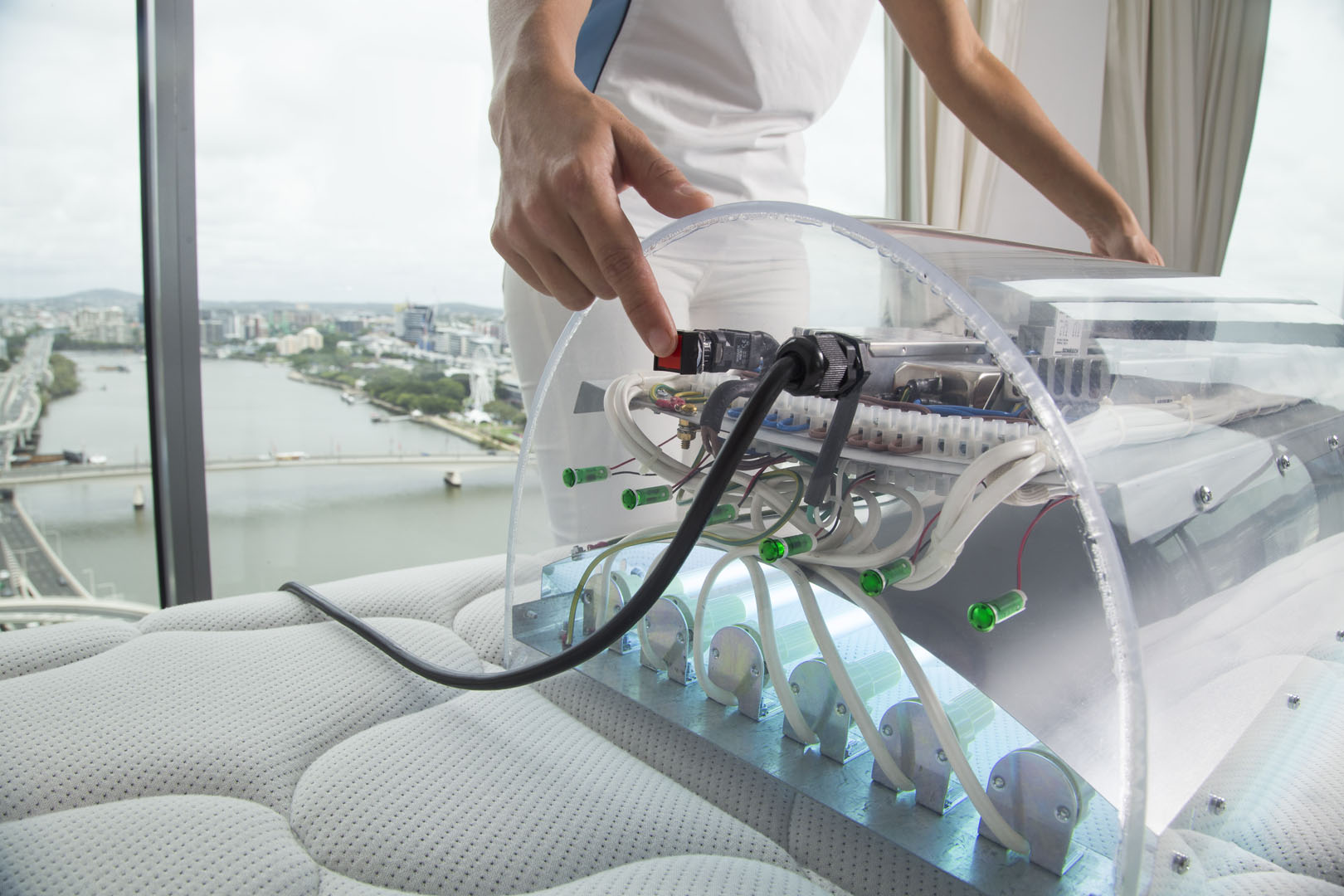Microorganisms associated with mattresses can negatively affect the integrity and appearance of a bed, cause unpleasant odors and potentially trigger health problems . This deplorable condition is especially common in hotel mattresses .
Consumer and commercial operators are challenged by the presence of these microorganisms and the negative effects they can cause . That’s why antimicrobial treatments(UV) for bacterial and fungal control are becoming increasingly popular both among consumers as well as among accommodation operators . Deterioration, defacement, odors, and harboring harmful microorganisms are the unpleasant truth we see in linen and mattress type products where microbial contamination is present . Microorganisms have an unending ability to adjust to their environments and the ability to control bacteria, fungi, algae, and other microbes on woven, nonwoven, and coated fabrics(used in mattresses) is something in which we take a great pride .
The ability and capacity to control bacteria, gabites, algae and other microbes that live on knitted, unwrought and coated materials (which are used in the mattresses) stems from the constant battle for their control.

Low-pressure mercury vapor lamps emit around 87% of their light energy at the 254 nm wavelength. This feature makes these lamps a very efficient source of germicidal ultraviolet light. The wavelength of light that microorganisms will most readily absorb light is around 260 nm. At this wavelength parts in the strands of the genetic code contained in the DNA (Deoxyribonucleic acid) and/or RNA (Ribonucleic acid), which are responsible for the replication of microorganisms, are destroyed. Without the ability to divide and multiply, the organism dies. Low-pressure mercury vapor lamps provide the majority of their light energy at the 254 nm, which means they have been designed to emit light that is aimed at direct absorption by the microorganism, which in turn leads to their destruction.
UV-C technology can kill more than 99.99% of all known pathogens in a matter of seconds. This process is free of chemicals and has no side effects. It is cost efficient, highly efficient and 100% safe. We guarantee your satisfaction!
cleanmax.so-uvc
What Really Happens in the Microorganism’s DNA
UV-C at the 254 nm wavelength penetrates the cell membrane of microorganisms. Due to their high energy, UV-C photons are absorbed by the cell proteins as well as the DNA / RNA. UV-C light damages the protein structure, which causes metabolic malfunction of DNA/RNA of the microorganism. DNA is chemically modified, which means that microorganisms cannot replicate further. They are thus unable to cause any disease or decay. This process is deadly for all microorganisms, bacteria, fungi and viruses.